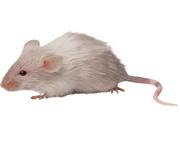 Male mice have a constant supply of sperm-generating stem cells.© Getty
Male mice have a constant supply of sperm-generating stem cells.© GettyResearchers in Germany have identified a potential source of reprogrammable cells in adults that could be used for regenerative therapy. The cells would be taken directly from the testis and cultured. No cloning or destruction of embryos would be necessary.
The discovery opens up the possibility, at least for men, of having an endless source of fresh stem cells tailored to one's genetic makeup, which could be turned into any kind of body tissue and used for treatment. This has been the promise of stem cells taken from cloned embryos, but the use of cloned embryos has run into considerable ethical and technical problems (see 'Where now for stem-cell cloners? ').
Gerd Hasenfuss from the Georg-August-University of Göttingen and colleagues report the results in Nature1. Their work shows the extraction of the cells from male mice, but it should be possible to produce similar results with samples taken from human testicles through a biopsy, says Wolfgang Engel, a human geneticist also at the Georg-August-University of Göttingen and a co-author on the paper.
The cells have been shown to have some of the same characteristics as embryonic stem cells, but not all, notes Chris Higgins, director of the Medical Research Council's Clinical Sciences Centre at Imperial College London, UK. "There needs to be further research before we really get excited about it."
Tagged up
To perform the work, the team first created a transgenic breed of mice in which sperm-producing stem cells were labelled with a fluorescent marker. This helped them to isolate the 0.3% of cells in mouse testes that are stem cells. They then cultured the stem cells using typical materials, and found that some of them looked like embryonic stem cells. "We were surprised," says Engel.
Hasenfuss has so far shown that these embryonic-like stem cells can turn into a number of different types of cell in the lab dish, including heart, brain and skin cells. "There are 250 different cell types in the body, we have not tested them all yet," says Engel.
The team then tagged these cells with a blue marker and injected them into young mouse embryos to see whether they had the power to develop inside a living mouse. In 90% of cases, they did. "It is clear that these cells do not only differentiate in vitro to these different cell types, but they can also differentiate in the different organs," says Engel.
It is unclear whether the cells have this capacity under natural conditions inside the testes.
Only the young
Such multi-purpose stem cells have previously been found in mice testes by Takashi Shinohara of Kyoto University, Japan, but only in animals up to two days old2. He only found flexible stem cells in extracts from about 1 in 30 of his mice, he says, and suspects that the way the cells are cultured may be the thing that turns the sperm-specific stem cells into the more flexible variety. Shinohara has been trying to adjust his culturing technique to increase this efficiency.
In contrast, Hasenfuss's group was able to achieve growth of stem cell cultures from 4 of the 15 mice they used.
Further work will be needed to test the viability of the cells for therapy. Alan Colman, CEO of ES Cell International Pte Ltd in Singapore, wonders whether they might deteriorate in quality over time, a characteristic of sperm cells. Hasenfuss's team has yet to look for signs of ageing in their cells.
Just for boys?
ADVERTISEMENT
Hasenfuss's group now aims to repeat the work in humans, and plans to ask for permission to use cells from surgery patients or corpses.
For the time being the work is only applicable to males. Shinohara, for one, says he has not been able to find a similar source of tailor-made stem cells in female mice. "Maybe we just missed it, but maybe it's not there."
But Engels notes there is some evidence that egg-producing stem cells do exist in the ovary. "I think it will be possible to find stem cells there," he says.
Visit our cellsfoundinadult_mous.html">newsblog to read and post comments about this story.
